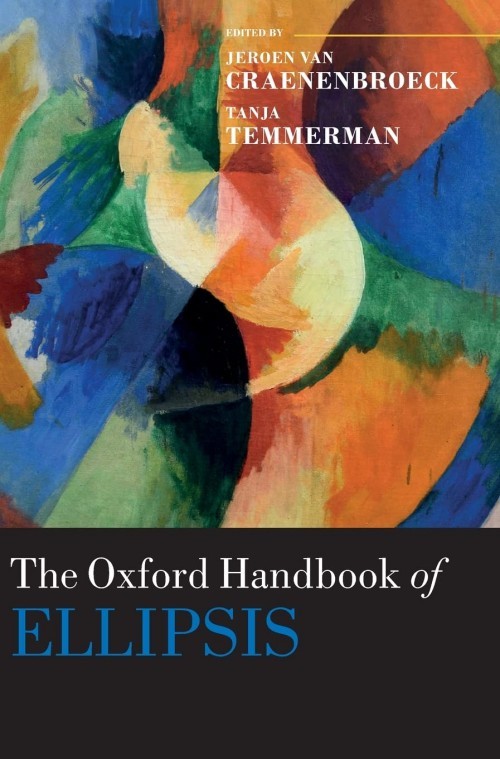Receive your first E-Book(s) on us valued up to $10, simply by registering an account today.
The Oxford Handbook of Ellipsis
$37.49 Original price was: $37.49.$28.99Current price is: $28.99.
This handbook is the first volume to provide a comprehensive, in-depth, and balanced discussion of ellipsis phenomena, whereby the meaning of an utterance is richer than would be expected based solely on its linguistic form. Natural language abounds in these apparently incomplete expressions, such as I laughed but Ed didn’t, in which the final portion of the sentence, the verb ‘laugh’, remains unpronounced but is still understood. The range of phenomena involved raise general and fundamental questions about the workings of grammar, but also constitute a treasure trove of fine-grained points of inter- and intralinguistic variation.
The volume is divided into four parts. In the first, authors examine the role that ellipsis plays and how it is analysed in different theoretical frameworks and linguistic subdisciplines, such as HPSG, construction grammar, inquisitive semantics, and computational linguistics. Chapters in the second part highlight the usefulness of ellipsis as a diagnostic tool for other linguistic phenomena including movement and islands and codeswitching, while part III focuses instead on the types of elliptical constructions found in natural language, such as sluicing, gapping, and null complement anaphora. Finally, the last part of the book contains case studies that investigate elliptical phenomena in a wide variety of languages, including Dutch, Japanese, Persian, and Finnish Sign Language.
SKU
EBP_V6281058
Categories Language Arts & Disciplines, Linguistics
 Purchase this item and get 19 Points - a worth of $1.90
Purchase this item and get 19 Points - a worth of $1.90This handbook is the first volume to provide a comprehensive, in-depth, and balanced discussion of ellipsis phenomena, whereby the meaning of an utterance is richer than would be expected based solely on its linguistic form. Natural language abounds in these apparently incomplete expressions, such as I laughed but Ed didn’t, in which the final portion of the sentence, the verb ‘laugh’, remains unpronounced but is still understood. The range of phenomena involved raise general and fundamental questions about the workings of grammar, but also constitute a treasure trove of fine-grainedpoints of inter- and intralinguistic variation. The volume is divided into four parts. In the first, authors examine the role that ellipsis plays and how it is analysed in different theoretical frameworks and linguistic subdisciplines, such as HPSG, construction grammar, inquisitive semantics, and computational linguistics. Chapters in the secondpart highlight the usefulness of ellipsis as a diagnostic tool for other linguistic phenomena including movement and islands and codeswitching, while part III focuses instead on the types of elliptical constructions found in natural language, such as sluicing, gapping, and null complement anaphora.
Finally, the last part of the book contains case studies that investigate elliptical phenomena in a wide variety of languages, including Dutch, Japanese, Persian, and Finnish Sign Language.
| Book Author: | Jeroen van Craenenbroeck (editor), Tanja Temmerman (editor) |
|---|---|
| Book Series: | Oxford Handbooks |
| Language: | English |
| Pages: | 3173 |
| Publisher: | Oxford University Press |
| Publication Date: | 2019 |
| ISBN-13: | 9780198712398 |
| Format: | iPhones/iPads/Mac (Apple Books), Androids/PCs (Google Play), Kobo, Nook, Kindle |
Only logged in customers who have purchased this product may leave a review.
Best seller of the week
-
The Paper Lion
$10.99Original price was: $10.99.$8.99Current price is: $8.99.Rated 0 out of 5Add to cart -
Put Me in the Zoo
$10.99Original price was: $10.99.$8.99Current price is: $8.99.Rated 0 out of 5Add to cart -
The Password to Larkspur Lane
$9.99Original price was: $9.99.$7.99Current price is: $7.99.Rated 0 out of 5Add to cart
















Reviews
There are no reviews yet.